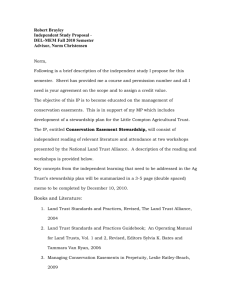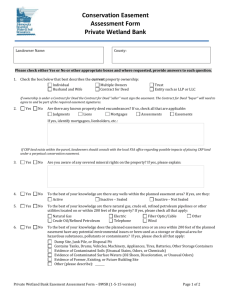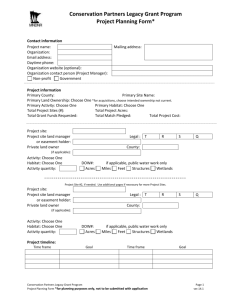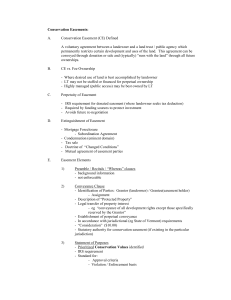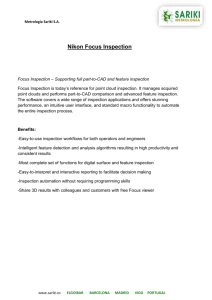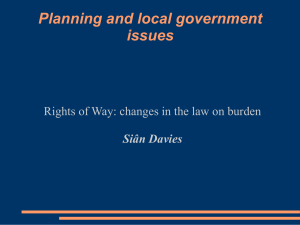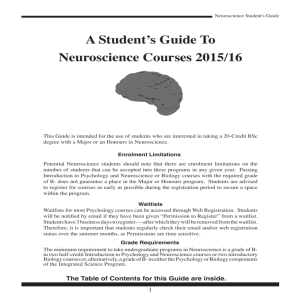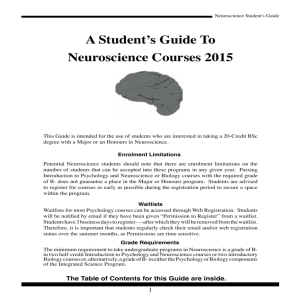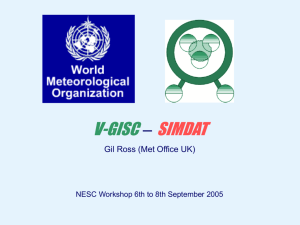DIRECTOR COURSE #2640
advertisement
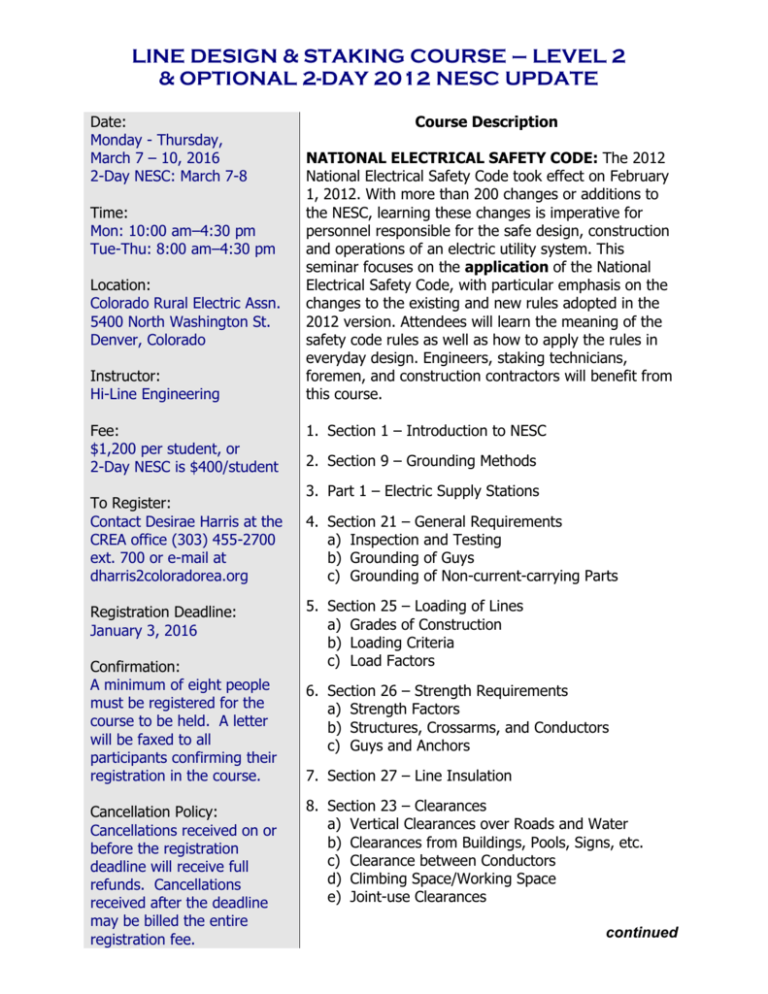
LINE DESIGN & STAKING COURSE – LEVEL 2 & OPTIONAL 2-DAY 2012 NESC UPDATE Date: Monday - Thursday, March 7 – 10, 2016 2-Day NESC: March 7-8 Time: Mon: 10:00 am–4:30 pm Tue-Thu: 8:00 am–4:30 pm Location: Colorado Rural Electric Assn. 5400 North Washington St. Denver, Colorado Instructor: Hi-Line Engineering Fee: $1,200 per student, or 2-Day NESC is $400/student To Register: Contact Desirae Harris at the CREA office (303) 455-2700 ext. 700 or e-mail at dharris2coloradorea.org Registration Deadline: January 3, 2016 Confirmation: A minimum of eight people must be registered for the course to be held. A letter will be faxed to all participants confirming their registration in the course. Cancellation Policy: Cancellations received on or before the registration deadline will receive full refunds. Cancellations received after the deadline may be billed the entire registration fee. Course Description NATIONAL ELECTRICAL SAFETY CODE: The 2012 National Electrical Safety Code took effect on February 1, 2012. With more than 200 changes or additions to the NESC, learning these changes is imperative for personnel responsible for the safe design, construction and operations of an electric utility system. This seminar focuses on the application of the National Electrical Safety Code, with particular emphasis on the changes to the existing and new rules adopted in the 2012 version. Attendees will learn the meaning of the safety code rules as well as how to apply the rules in everyday design. Engineers, staking technicians, foremen, and construction contractors will benefit from this course. 1. Section 1 – Introduction to NESC 2. Section 9 – Grounding Methods 3. Part 1 – Electric Supply Stations 4. Section 21 – General Requirements a) Inspection and Testing b) Grounding of Guys c) Grounding of Non-current-carrying Parts 5. Section 25 – Loading of Lines a) Grades of Construction b) Loading Criteria c) Load Factors 6. Section 26 – Strength Requirements a) Strength Factors b) Structures, Crossarms, and Conductors c) Guys and Anchors 7. Section 27 – Line Insulation 8. Section 23 – Clearances a) Vertical Clearances over Roads and Water b) Clearances from Buildings, Pools, Signs, etc. c) Clearance between Conductors d) Climbing Space/Working Space e) Joint-use Clearances continued 9. Part 3 – Underground Conduit Systems and Direct Buried Cable 10. Part 4 – Operation of Electric Supply a) Arc Flash Requirements b) Approach Distances EASEMENT ACQUISITION: In this domain the student will learn about easement law, land ownership rights, titles, easement descriptions, and recording easements. He or she will also learn valuable negotiating skills to aid in the procurement of an easement. 1. General a) Boundary and easement law b) Locating property according to the Public Land Survey c) Locating property according to a metes and bounds survey d) Types of land ownership and types of easements 2. Anatomy of an easement a) Legal elements and description b) Signatures, notarizing, and recording 3. Effective negotiating a) Understanding people and personalities b) Defining and responding to different behavior types c) Principles of negotiating, closing the deal, and breaking deadlock d) Effectively communicating with landowners e) Establishing good negotiating traits 4. Special situations a) Dealing with a hostile land owner b) Bartering for easements with old poles and services c) Establishing easement by prescription and adverse possession d) Obtaining an easement through condemnation OBTAINING PERMITS: This domain teaches the student what information is required in a permit, how to setup an efficient permitting process, how to establish good personnel contacts to ease the process, and how to prepare permit documents and drawings. 1. General a) Establishing contact personnel b) Building files of permit documents c) Tracking progress in the permitting process d) Maintaining records and drawings (paper and electronic) 2. Departments of transportation (state, county, and municipal) a) Encroachment, crossing, and work permits b) Permit forms, vicinity maps, and traffic control diagrams continued 3. US Corps of Engineers a) Wetlands permits b) Navigable water crossing permits 4. Transmission lines a) Crossing under an existing transmission line b) Locating a proposed structure in the transmission spans 5. Miscellaneous permits a) Environmental b) Archeological LINE INSPECTION: The National Electrical Safety Code requires that a utility inspect its facilities periodically to ensure that they are safe and adequate to distribute electricity. In this domain, the student will learn the principles of making an inspection. The course will discuss the importance of a systematic method, the elements that should be checked, and different ways to perform the actual inspection. 1. NESC requirements a) Frequency of inspections b) Code violations and reporting 2. Records and maps a) Hand written inspection forms b) Electronic data entry (GPS) and management 3. Methods of inspection a) Helicopter and binoculars b) Vehicle ride through c) Foot patrol detailed inspection 4. Detailed visual inspection a) Clearances and other NESC requirements b) Condition of conductors, structures, and equipment c) Presence of required signage such as Two-Way-Feed, Caution, etc. d) Vegetation and environmental interference with the lines 5. Pole strength or integrity a) Visual inspection only of above ground pole surface b) Visual combined with sounding and screwdriver penetration c) Sonar and moisture/penetration d) Determination of strength or condition e) Marking and record keeping continued SUPPLIES NEEDED: Workbooks and manuals will be supplied for the specialized instruction. Each student will be required to supply a personal copy of the National Electrical Safety Code and RUS Specifications. Each student should bring a scientific calculator and note taking materials to each seminar. The students will work class problems both in groups and individually. These problems will involve both the lookup tables and calculations based on the material contained in the manuals. The instructors will answer questions and go through the solutions to the problems. The instructors will also be available to discuss ideas and questions to a reasonable extent after normal class hours. CERTIFICATION: The course of study leads to certification as a qualified staking technician. The certification will be awarded after the student accomplishes well-defined tasks and demonstrates a working knowledge of the subject material though observation and completion of comprehensive written tests. The classroom and field training is divided into three phases of four domains each to be taught in three separate four-day seminars. To achieve certification, the student must attend all three seminars and pass a test for each of the twelve domains. Students may re-take any test if their first try is unsuccessful. Colorado Electric Educational Institute Colorado Rural Electric Association

